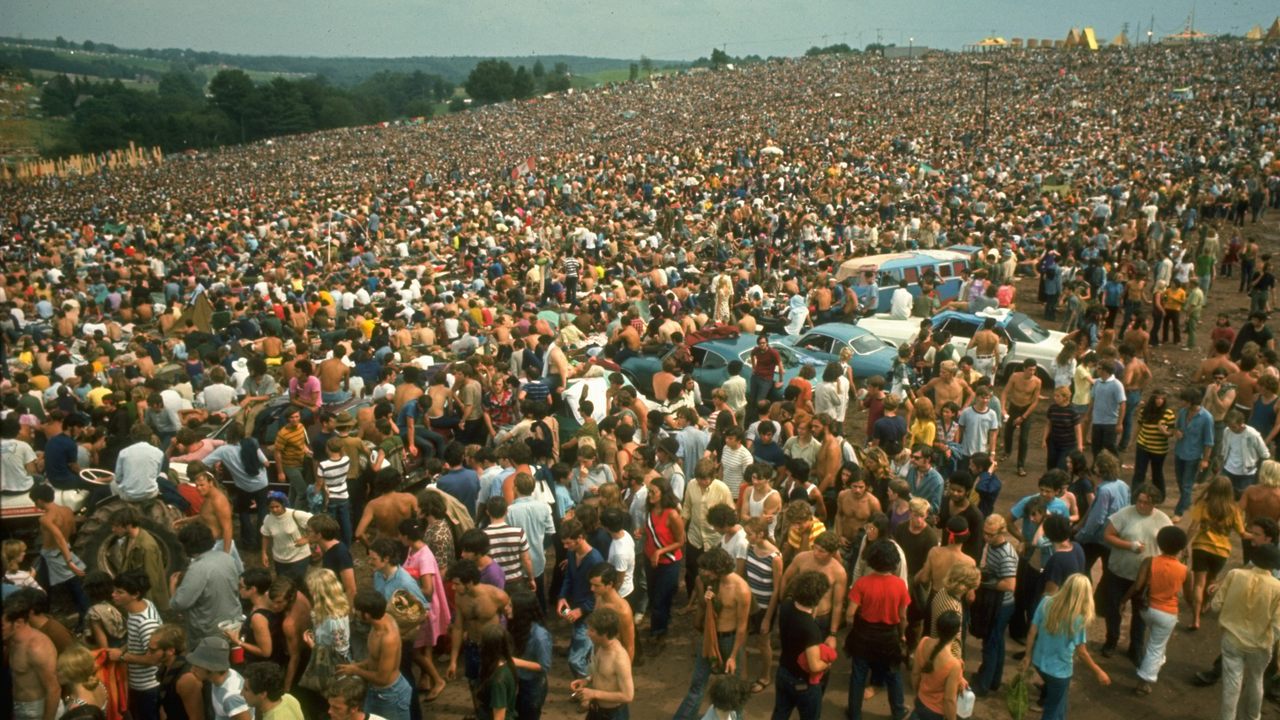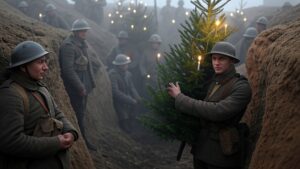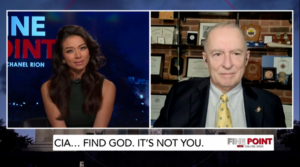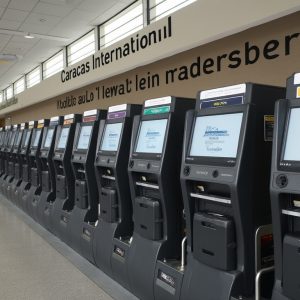The Road Well-Travelled: From Woodstock to Asbury
“Well, I came upon a child of God
He was walking along the road
And I asked him, ‘Tell me, where are you going?’
And this he told me.
Said, ‘I’m going down to Yasgur’s Farm
Gonna join in a rock n’ roll band
Got to get back to the land
Set my soul free’
We are stardust, we are golden
We are billion-year-old carbon
And we’ve got to get ourselves
Back to the garden”
Woodstock, Joni Mitchell (1969)[1]
“Be honest. When you heard about Asbury, which did you feel: jealousy, hurt, criticism, or doubt? Did you feel some kind of carnal curiosity about it? Some responded immediately by thinking of ways to exploit it to their own ends.”
Mario Marillo[2]
One of the positive by-products of our snow-birding experience at North Myrtle Beach, South Carolina, is being able to attend the terrific live musical shows in town. Last week, for example, we attended the show Time Warp at the Carolina Opry, one of our favorite music venues. The second part of the show featured songs associated with the Woodstock generation.
I thoroughly enjoyed the music (and the popcorn)!
The musicians and dancers—garbed in period-dress bell-bottom blue jeans and tie-dye shirts—performed songs by Joe Cocker, Creedence Clearwater Revival, Janis Joplin, Jefferson Airplane, and Crosby, Stills, Nash and Young, among others.
It truly was a trip down memory lane.
I was getting ready to begin my senior year at Cumberland College in Williamsburg, Kentucky, on August 15-18, 1969, when the Woodstock Music and Art Fair was held on Max Yasgur’s dairy farm in Bethel, New York. The festival’s audience included at least 400,000 attendees, 32 musical acts (despite sporadic rain and thunder storms), was one of the largest music festivals in history, and is considered by many as the defining event of the counterculture movement. In 2004, Rolling Stone magazine, for example, listed the music festival as number 19 of the 50 Moments That Changed the History of Rock and Roll.”[3] The festival’s social and cultural significance is such that the location was listed on the National Register of Historic Places in 2017.[4]
For me, Woodstock is significant for three reasons. First, in an age when the technology of music was limited to reel-to-reel tapes and plastic albums, I played the soundtrack of Woodstock for hours on end. My favorite song was Tommy by the Who (an unforgettable rendition from the rock-music opera with Peter Townsend’s hard-hitting guitar solo). Many view the guitar version of the National Anthem by Jimi Hendrix—the closing act of the Festival—as the most iconic piece of the gathering. In addition to the previously mentioned performers, I was raised on, and influenced by, the music of Woodstock performers: Melanie, Arlo Guthrie, Joan Baez,[5] Country Joe McDonald, Santana, John Sebastian, Canned Heat, Mountain, Grateful Dead, Creedence Clearwater Revival, Janis Joplin, Sly and the Family Stone, The Band, Johnny Winter, Blood, Sweat & Tears, and Sha-Na-Na, among others.
Of all the personal remembrances from Festival participants, my favorite was the description of the spectacle by John Fogerty, then lead singer for Creedence Clearwater Revival, as they took the stage at 12:30 a.m. He described a half million mostly sleeping bodies as resembling a painting of a scene from Dante—bodies from hell—with limbs intertwined and covered in mud. “And this is the moment I will never forget as long as I live: A quarter mile away in the darkness, on the other edge of this bowl, there was some guy flicking his Bic, and in the night I hear, ‘Don’t worry about it, John. We’re with you.’ I played the rest of the show for that guy.”[6]
Secondly, the performance of Woodstock-era classics evoked memories of my mom. Shortly before she passed in November 2021, I remember us sitting in the living room of the house on Royal Drive in Springboro, Ohio. She was sitting in her favorite chair (dad was sleeping in his) and we watched a fascinating documentary on television about Woodstock. I can still recall snippets of our conversation in response to the documentary and footage of the participants.
That brings me to my third point. As mom and I discussed, the Woodstock Festival came to characterize a generation of anti-war (we were in the midst of the Vietnam War back then), drug-crazed, and free-loving teenagers. No other event of the era even comes close to shaping the psychology of an entire generation. The anti-establishment and anti-war views held by many of the performers shaped a future generation of politicians and college professors. In my view—and I know many of you will disagree with me—the guilt consciousness of those who evaded the draft hardened into a political distrust for this country and its military that still pervades the educational system today.[7]
Shortly after Woodstock and far away from upstate New York (both in terms of distance and cultural values), in a sleepy campus community in central Kentucky, then called Asbury College, a revival among teenage students broke out. The revival piggy-backed with the “Jesus Movement” of those years. In short, when the needle moves among the teenage cohort toward an acceptance of things abhorrent to God, He brings a revival in the most unlikely of places.
Move the time-dial forward by more than a half-century. The sheer lack of godliness, a deterioration of social decorum, the ongoing war on Christian family values, the new religion of “Woke-ism,”[8] the debilitating excesses of social media, the overt acceptance of sin, and a pervasive acceptance of a spirit of death, is seen everywhere around us. Those who cannot see this erosion of values, in my view, suffer from the end-times “delusion” spoken of in scripture. The pure demonic and satanic performance by Sam Smith with Kim Petras during the most recent Grammy Awards Show, is a case in point, and—in my view—belies any claim that it was just artistic license.[9]
At any rate, a new spiritual revival has broken out at Asbury. Earlier this week, I had several people call or text me asking if I had heard about what was happening on Asbury’s campus. Of course, the mainstream media—obsessed with Ukraine, balloons, and UFOs—have completely ignored the event. It began when a handful of students came forward last Wednesday (Feb. 8) to pray following an ordinary chapel program in the Hughes Auditorium on campus. By the end of the day, they were joined by throngs of students. The news spread beyond the campus community: students from over thirty other campuses have joined in; the tiny community of Wilmore is now beset by traffic jams as curious onlookers flock to campus. What began as a purely student piety movement has grown exponentially. The event is not focused on any single individual, includes participants of all denominations, is characterized by quiet spiritual worship rather than extravagant supernatural manifestations, and features spontaneous music and testimonies.[10] The participants have created a prayerful—rather than boisterous—spiritual environment.
As of this writing, the revival continues to grow.
I pray it spreads like wildfire across the country and abroad. If ever there was a young generation—and a nation—in need of a divine movement of God, it is now!
[1] Joni Mitchell—who didn’t attend Woodstock on the advice of her agent who feared she would miss an appearance on The Dick Cavett Show—wrote the song in tribute to the Festival. The most well-known version of the song was by Crosby, Stills, Nash and Young. See, Leah Rosenzweig, “Joni Mitchell’s ‘Woodstock’ Best Captures the Festival, But She Wasn’t Even There,” VMP, Aug. 15, 2019.
[2] Mario Murillo, “How to Respond to the Asbury Revival,” blog, Feb. 16, 2023. For what it is worth, Murillo is one of the few preachers today whose ministry reflects the true nature of Jesus Christ.
[3] “Woodstock in 1969,” Rolling Stone, Jun. 24, 2004.
[4] “National Register of Historic Places listings for March 10, 2017,” U.S. National Park Service, Mar. 10, 2017.
[5] During my survival training at Fairchild AFB—designed to simulate a concentration camp experience in the event we were shot down—and prior to going to the Asian war theater, I was crammed in a locker-sized cell and forced to listen to Joan Baez anti-war music. I remember it like it was yesterday.
[6] Hank Bordowitz, Bad Moon Rising: The Unauthorized History of Creedence Clearwater Revival, Chicago: Chicago Review Press, 2007, p. 390.
[7] I discussed my ideas in this regard on Christopher McDonald’s nationwide blog broadcast, McFiles, on Feb. 13, 2023. I invite each of you to listen to the recorded conversation.
[8] For an interesting perspective on this topic, see “Wokeism: America’s Official State Religion, Whistleblower, Feb. 2023 issue.
[9] Dani Di Placido, “Sam Smith’s Grammys Performance Criticized by Conservatives and Satanists,” Forbes, Feb. 10, 2023.
[10] My personal conversation with Ray Hartman, high school friend, retired pastor and Asbury alum. See also, Bob Unruh, “Revival breaks out at Christian college, WND, Feb. 16, 2023; and, “Faith at Stake: A Christian University in Kentucky Draws Nationwide Attention With This Week-Long Event,” BlabberBuzz, Feb. 17, 2023.




